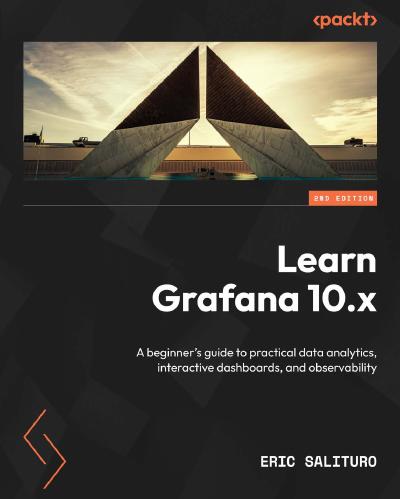
English | 2023 | ISBN: 978-1803231082 | 542 Pages | PDF, EPUB | 64 MB
Get up and running with building data pipelines and creating interactive dashboards to visualize, monitor, and present a wide variety of time-series data with this comprehensive introductory guide
Key Features
- Install, set up, and configure Grafana for real-time data analysis, visualization, and alerting
- Visualize and monitor data using data sources such as InfluxDB, Telegraf, Prometheus, and Elasticsearch
- Explore Grafana’s cloud support with Microsoft Azure, Amazon CloudWatch, and Google Cloud Monitoring
Get ready to unlock the full potential of the open-source Grafana observability platform, ideal for analyzing and monitoring time-series data with this updated second edition. This beginners guide will help you get up to speed with Grafana’s latest features for querying, visualizing, and exploring logs and metrics, no matter where they are stored.
Starting with the basics, this book demonstrates how to quickly install and set up a Grafana server using Docker. You’ll then be introduced to the main components of the Grafana interface before learning how to analyze and visualize data from sources such as InfluxDB, Telegraf, Prometheus, Logstash, and Elasticsearch. The book extensively covers key panel visualizations in Grafana, including Time Series, Stat, Table, Bar Gauge, and Text, and guides you in using Python to pipeline data, transformations to facilitate analytics, and templating to build dynamic dashboards. Exploring real-time data streaming with Telegraf, Promtail, and Loki, you’ll work with observability features like alerting rules and integration with PagerDuty and Slack. As you progress, the book addresses the administrative aspects of Grafana, from configuring users and organizations to implementing user authentication with Okta and LDAP, as well as organizing dashboards into folders, and more.
By the end of this book, you’ll have gained all the knowledge you need to start building interactive dashboards.
What you will learn
- Learn the techniques of data visualization using Grafana
- Get familiar with the major components of Time series visualization
- Explore data transformation operations, query inspector, and time interval settings
- Work with advanced dashboard features, such as annotations, variable-based templating, and dashboard linking and sharing
- Connect user authentication through Okta, Google, GitHub, and other external providers
- Discover Grafana’s monitoring support for cloud service infrastructures
Resolve the captcha to access the links!